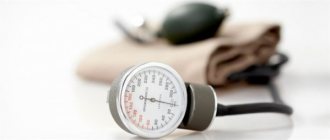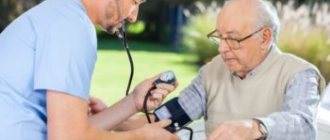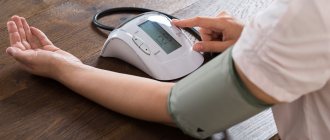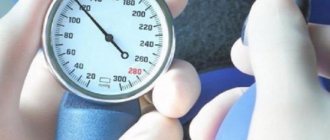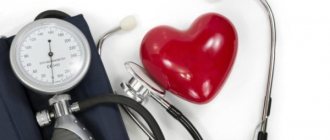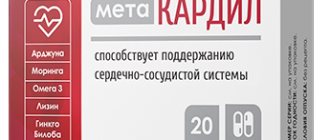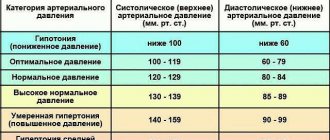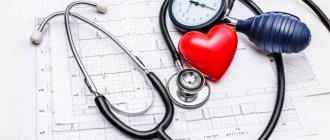The amount of blood pressure depends on the quality of the heart and the condition of the blood vessels. For most healthy people, the readings range from 140/90 to 90/60 mm Hg. Art. Under the influence of certain factors they increase or decrease.
A pressure of 90 to 80 indicates hypotension, which can develop as an independent disease or be a symptom of a more serious pathology.
What does blood pressure 90/80 mean?
If you were measuring your blood pressure, you noticed on the tonometer 90 by 80 mmHg. Art. Don’t rush to diagnose yourself and swallow pills. Not all people with low blood pressure need to be treated. Patients experiencing unpleasant symptoms require therapy. If at indicators of 90 to 80 mm Hg. Art. the person feels fine, no treatment is needed - this is the norm for him.
There is a category of people who, with low blood pressure, can lead an absolutely normal life, in particular this applies to women. Hypotonics are much more common among them than among men.
In pregnant women, low blood pressure due to hormonal changes is also normal. Hypotension in pregnant women does not require medical intervention as long as the woman feels normal.
If you feel worse, be sure to consult a doctor. There is a high probability of developing intrauterine bleeding and miscarriage.
In men, hypotension can develop due to emotional exhaustion, environmental influences, bad habits and concomitant diseases.
In adolescents and school-age children, low blood pressure is a sign of a lack of vitamins in the body.
People of retirement age rarely suffer from hypotension; their blood pressure usually rises. If an elderly person feels a constant drop in systolic pressure, only the doctor who conducted the examination can tell what this means.
A short-term decrease in performance is often caused by taking medications.
Are such indicators dangerous?
A lot of people prone to hypotension ask whether this pressure is dangerous?
By itself, a blood pressure reading of 90 over 80 does not pose a threat to life. Only one of the indicators is underestimated, the second is within the normal range. The alarm should be sounded when the lower reading falls below 60 or 50 mmHg. Art. And also read on our website: What does blood pressure 160 over 80 mean in men and women, reasons, what to do and how to treat high blood pressure? This pressure can harm the body if it is caused by blood loss, dehydration or anaphylactic shock. Arterial hypotonicity in the above critical situations provokes serious complications, for example, such as renal failure, loss of consciousness and coma.
To avoid undesirable consequences, as soon as you notice a decrease in blood pressure and begin to notice alarming symptoms, call an ambulance.
Arterial hypotension - symptoms and treatment
During the day, blood pressure changes depending on body position, breathing, stress, physical condition, medications taken, how much a person eats and drinks, and the time of day. Physiologically, BP is usually lowest at night and rises sharply upon awakening.
The human body has certain mechanisms to maintain blood pressure and blood flow at normal levels. These mechanisms are interconnected: the walls of the arteries, determining the level of blood pressure, send signals to the heart, arterioles, veins and kidneys to regulate blood flow. Blood pressure primarily depends on peripheral resistance of blood vessels and cardiac output.
Peripheral vascular resistance is the total resistance of the entire vascular system to the flow of blood that is ejected by the heart into the arteries. The muscle tissue in the walls of arterioles allows these blood vessels to dilate or contract. The stronger the arterioles contract, the higher their resistance to blood flow and the more the blood pressure increases, because in order to push blood through a narrower lumen, more pressure must be applied. Conversely, when arterioles dilate, resistance to blood flow decreases, leading to a drop in blood pressure. The degree of narrowing or dilation of arterioles can be regulated by nerves, hormones, and medications.
At the same time, the regulatory mechanisms of the heart change cardiac output (the amount of blood pumped by the heart into the arteries in one minute). Blood pressure can increase due to increased heart rate and therefore more blood being pumped into the arteries. Veins can dilate, narrow, and deposit (accumulate) more blood. That is, the more blood the heart pumps per minute, the higher the pressure will be, as long as the diameter of the arteries remains unchanged. The volume of blood during each beat depends on the force of contraction and the function of the valves. The total volume of blood in the arteries may depend on the volume of fluid in the body, the volume of fluid removed through the kidneys, and the use of medications.
The kidneys, in turn, respond to these changes by increasing or decreasing the amount of urine excreted, which changes blood volume, affecting blood pressure [6].
All these adaptive mechanisms maintain blood pressure within normal limits.
The physiological tendency towards hypotension and a low pulse in athletes is nothing more than a protective reaction of the body to constant physical activity. With constant exercise that requires endurance, the cardiovascular system undergoes a restructuring: it begins to work in a more economical mode. This hypotension is called high-training hypotension [31].
Theories of the occurrence of pathological AHT
Endocrine. In accordance with this theory, the disease can have adrenal, pituitary and hypothyroid origin. The reasons are:
- decreased synthesis of hormones that increase blood pressure (catecholamines, vasopressin, mineralocorticoids, adrenocorticotropic hormone, thyroid hormones);
- decreased sensitivity of vascular and cardiac receptors to these hormones.
This leads to a decrease in total peripheral vascular resistance, circulating blood volume and cardiac output.
Vegetative theory. According to it, the occurrence of arterial hypotension is associated with an increase in the activity of the cholinergic system and a decrease in the activity of the adrenergic system [4][17]. In this case, the following occurs in blood plasma and daily urine:
- the content of acetylcholine increases, a substance that is involved in the transmission of impulses in different parts of the brain, while its small concentrations facilitate this transmission, and its large concentrations inhibit it;
- the level of catecholamines decreases - active substances that directly or indirectly increase the activity of the endocrine glands, stimulate the hypothalamus and pituitary gland, which are involved in maintaining blood pressure levels.
Neurogenic. According to this theory, under the influence of psychogenic factors there is a change in neurodynamic processes in the cerebral cortex, a violation of the relationship between the processes of excitation and inhibition both in the cortex and in the subcortical autonomic centers [14]. This leads to hemodynamic disturbances, the most important of which is considered to be capillary dysfunction with a decrease in total peripheral resistance. The mechanism for the development of arterial hypotension is to reduce the tonic (contractile) effects of the sympathetic nervous system on the walls of blood vessels and the heart.
The humoral theory suggests that arterial hypotension is caused by an increase in the level of kinins (low molecular weight peptides that cause contraction and relaxation of smooth muscles), prostaglandins A and E (a group of lipid physiologically active substances formed enzymatically in the body), which have a vasodilating effect.
According to the metabolic theory , AHT is associated with a metabolic disorder of substances with hypo- and hypertensive effects. The causes may be dystrophic changes in organs and tissues (due to chronic intoxication, infections, starvation). In this case, the drop in blood pressure is associated with a decrease in the production and/or effects of active metabolites with a hypertensive effect (endothelin, thromboxane A2, angiotensinogen, etc.), a decrease in the tone of the myocytes of the arteriolar walls, and a decrease in the contractile function of the heart muscle. Sometimes the cause is a decrease in water content in the body. Taken together, these factors cause a persistent decrease in blood pressure.
Causes
The causes of hypotension may lie in hereditary predisposition. If one of the parents suffered from this disease, then with a 60% probability, reduced blood pressure will also appear in children. Constant stress, lack of sleep, fatigue and lack of fluid in the body become additional risk factors for the development of hypotension.
A sharp decrease in blood pressure is caused by concomitant diseases:
- atherosclerosis;
- heart defects;
- stomach ulcer;
- hypothyroidism;
- inflammatory processes.
Hypotension is often associated with changes in atmospheric pressure, prolonged exposure to a stuffy room, or occurs after a hot bath.
Some people also experience symptoms of hypotension when getting on the subway. In healthy people, blood pressure decreases with overeating, emotional shock, fear, and sometimes with tension during bowel movements.
Pressure of 90 to 80 can develop as a compensatory reaction to various life situations and factors. For example, blood pressure of 90 over 80 is recorded among residents of mountainous areas and professional athletes. Even with lower readings, they may feel normal.
Nothing hurts, but I don’t even have the strength to get out of bed... Is this a familiar state? It may be a sign of low blood pressure. Yulia Sachuk, a cardiologist at Petrozavodsk Polyclinic No. 4, spoke about what hypotension is and how to live with it.
– Yulia Viktorovna, what kind of blood pressure is considered low and is called hypotension?
– Less than 100/70 or 90/60, but there are a few caveats. First of all, you need to understand that hypotension can be of two types. If we are talking about physiological hypotension, then for many people this is a completely normal condition.
That is, a person with a blood pressure of 90/60 can feel very good; for him, such seemingly low blood pressure is not hypotension. This is his normal state.
Most often, such pressure occurs in fragile and petite girls and slender young women. In men, overweight people, hypotension is much less common.
In addition to physiological, hypotension can be secondary, when a decrease in pressure occurs due to a number of reasons. For example, after taking medications that lower blood pressure in hypertensive patients, if their dosage is not adjusted. Or after taking medications, the side effect of which is a decrease in blood pressure.
Certain diseases can lead to secondary hypotension, in particular any intoxication of the body (ARVI and other inflammatory diseases), anemia (decreased hemoglobin), as well as chemotherapy for oncology.
– What does a person experience with hypotension?
– General weakness, drowsiness, fatigue, nausea...
– Isn't nausea a sign of high blood pressure?
- Not only. Symptoms such as headache, dizziness, trembling in the body, in the hands, palpitations, nausea can occur with both hypertension and hypotension.
– Are there medications for hypotension?
– There are no clinical recommendations for prescribing drugs for hypotension. In order to slightly increase blood pressure, as a rule, they take caffeine-containing medications, you can also drink strong tea, herbal infusion, a cup of coffee, or eat a piece of dark (that’s right, bitter!) chocolate.
In addition, you can lie down with your legs elevated: in this case, blood flow to the heart increases and the pressure rises slightly.
– If a person suddenly gets up from bed, for example in the morning, and feels dizzy, is he hypotensive?
– In this case, we can talk about the so-called orthostatic hypotension, that is, a condition that occurs during a sharp transition from a horizontal to a vertical position. The advice here is this: when sleeping, the head should be higher than the lower part of the body, that is, such people are not recommended to sleep without a pillow, as many people do now.
In addition, they should not get up abruptly; it is better to do it calmly, without rushing, so that the body has time to stabilize: first, sit down on the bed, pause, and then you can get up.
– Everyone knows that hypertension can lead to serious consequences such as stroke or heart attack. What about hypotension?
– Low blood pressure can be dangerous, of course. Most often in older people taking pills for hypertension. Moreover, the most dangerous time is in the morning. The fact is that at night a person’s blood pressure usually drops slightly, and while taking antihypertensive drugs this decrease is even greater. Therefore, it is very important to follow the correct dosage of medications.
– How dangerous is hypotension for pregnant women?
– I will say this: the greater danger for them is high blood pressure, which can lead to complications and premature birth.
– How does the weather affect hypotensive patients?
– They are often sensitive to weather changes, especially in the off-season, during the transition from one season to another. More often in spring and autumn.
– If a person lives with low blood pressure for many years, does this mean that he is not at risk of hypertension?
- Of course not! Hypotension is not a guarantee that you will never have hypertension. It can develop as an independent disease under the influence of various factors, when the neurohumoral regulation of the body is disrupted, that is, the nervous and vascular systems begin to work not quite correctly. Hypertension can also be hereditary.
It is worth noting that for hypotensive people the limits of high blood pressure are somewhat lower. For example, everyone knows that hypertension is when blood pressure repeatedly exceeds 140/90. So, for those who have always had low blood pressure, 130/80 may already be the initial manifestation of hypertension.
Of course, if we talk about hypertension and hypotension, then today throughout the world it is hypertension, that is, arterial hypertension, that “contributes” to mortality from cardiovascular diseases both in our country and in Europe, and, in general, in all over the world. But hypotension cannot be ignored either. In any case, if something bothers a person, you need to see a therapist.
By the way
- Low blood pressure and a sedentary lifestyle are a very bad combination. Hypotonic people benefit from dosed physical activity, because this increases blood pressure slightly. You can dance, swim in the pool, ski, walk or bike... The load should be selected individually, taking into account existing contraindications.
- Hypotensive people need to eat regularly, at least four times a day. A diet with a high content of potassium (potatoes, eggplants, cabbage, prunes, apricots) and calcium (dairy and fermented milk products, cheeses) helps improve your well-being.
- It is recommended to sleep at least 7-8 hours a day, ideally all 9. Otherwise, lethargy and irritability are guaranteed.
How does it manifest?
The diagnosis of hypotension is made when, along with a decrease in blood pressure, pathological symptoms occur in a person.
This situation is caused by a lack of blood supply to the internal organs. If not enough oxygen reaches the brain, patients feel dizzy and sometimes even lose consciousness.
Dizziness can occur with a sudden change in body position - this is the so-called orthostatic hypotension.
Hypotension is manifested by drowsiness, general weakness, headache, confusion, and decreased performance. The disease may be accompanied by autonomic disorders, for example, sweaty palms, a feeling of lack of air, and a decrease in body temperature.
Pulse
Pulse at 90 to 80 mmHg. Art. should be 60-80 strokes for older people, 70-90 for middle-aged people and 80-110 for children and trained athletes.
A decrease in blood pressure does not mean that the heart should slow down. If the number of heartbeats decreases, be sure to call an ambulance.
Lack of pulse with a pressure of 90 to 80 is a sign of internal bleeding or a pre-stroke condition.
And also read on our website: What does blood pressure 170 over 80 mean: causes, symptoms, what to do and how to reduce it at home?
What to do?
When faced with hypotension for the first time, people do not know what to do and simply ignore their condition. You can't do this. Don't be lazy to see a doctor. If provoking diseases are discovered during the diagnostic process, drug therapy is aimed at eliminating them.
Often, hypotension is a sign of vegetative-vascular dystonia. In this case, drug treatment fades into the background. To stabilize blood pressure, doctors recommend that patients adhere to the following rules:
- Drink 2-2.5 liters of liquid every day. Water helps replenish blood volume and increase pressure on the vascular walls.
- Start your morning with strong tea or coffee - these drinks will tone your blood vessels.
- Try to always carry a piece of dark chocolate with you. If you feel dizzy or weak, chocolate will increase blood flow and eliminate the unpleasant clinical picture;
- After a hard day, take a contrast shower.
- If unpleasant signs of hypotension appear, massage the collar area yourself or ask for it.
Are you feeling an attack of arterial hypotension? Lie down and elevate your legs. This will speed up the blood supply to the brain and heart muscle.
Drink a cup of strong coffee, preferably brewed. Beetroot or pomegranate juice also improves blood circulation and restores the patient’s well-being.
Is it necessary to take medications?
If the above recommendations do not bring results, you will have to take advantage of the achievements of pharmacology. The therapist will tell you what exactly to take, but, as a rule, he prescribes:
caffeine-containing drugs: Citramon, Pentalgin, Piracetam, Ephedrine, Algon;- adaptogens: tincture of ginseng, lemongrass, eleutherococcus;
Blood pressure is increased with the help of drugs with a high content of B vitamins. Decoctions of yarrow, nettle, tansy and calendula have a good effect.
L-carnitine, Potassium Orotate, Panangin, Hypotensin Plus and Glutamic acid can be prescribed as adjuvant therapy.
How to help?
Helping hypotensive patients is not so easy; unlike hypertension, the list of medications is small:
“Acute symptoms are relieved by a number of medications, and for continuous use, doctors recommend herbal ones. Tinctures of ginseng, eleutherococcus, aralia, rosea radiola, leuzia, and pantocrine increase vascular tone and blood pressure, says the therapist. “The main thing is to use them for at least six months; the recommended dose of 10–15 drops can be changed based on how you feel.”
It is advisable to change the drug every month, as each has its own advantages. And drink it after meals, because, as the doctor’s experience shows, 90% of hypotensive people have problems with the gastrointestinal tract. But the most effective remedy, according to Lena Kubaeva, is a contrast shower .
“We must teach the vessels to actively narrow and dilate, and a contrast shower has helped more than one of my patients,” she says. – In addition, long-term, good sleep and the absence of stress are very important for vascular health, if this is, of course, possible. Walking and playing sports will help.”
If an attack of hypotension could not be avoided, then first aid is to lie down and raise your legs. Sweet tea, coffee, chocolate and definitely peace. If it doesn’t get any easier, call an ambulance.
